 Kafal (Myrica esculenta) is a small tree or large shrub. It is a well known medicinal plant in Ayurveda. Myrica esculenta is in hilly regions of Nepal and northern part of India especially in the region of Himalayan India, Garhwal, Kumaun, Khasia Mountains and silhiti especially at the height of 3 to 6 thousand. It is also found in the altitude below 1500 meters in mid hills of Nepal. Its common names include Box myrtle, Bayberry, Kafal (local name)
It has a tree of medium height i.e. 20 to 25 feet. Bark is soft and brittle. Leaves are conjoint, 1 to 2 feet long that has leaflets in pairs of 6 to 9 and has a width of ¼ inch. Flowers are of white color and are found in bunches. Fruits are 6 to 18 inch long and have 6 veins with having a brown color. Seeds are triangular in shape and
are astringent in taste.
According to Ayurveda, it has two varieties based on the color of flower: Shwet (white) and Rakta (red). The oil that is extracted from the bark of the tree Myrica Nagi is used in various perfumes, tinctures and oils that are used in Aromatherapy.
Although Myrica Nagi is a herb that is very safe to use, it should not be consumed before taking advice from a medical practitioner. It is wise to consult a doctor or a practicing medicine man before going ahead with the process of taking in any sort of herbs or herbal extracts. Planet Ayurveda provides customers with the option of obtaining medical advice from their medical practitioners online. Also, all products at Planet Ayurveda are 100 percent vegetarian; contain only herbs and have never been tested on animals.
Kafal (Myrica esculenta) is a small tree or large shrub. It is a well known medicinal plant in Ayurveda. Myrica esculenta is in hilly regions of Nepal and northern part of India especially in the region of Himalayan India, Garhwal, Kumaun, Khasia Mountains and silhiti especially at the height of 3 to 6 thousand. It is also found in the altitude below 1500 meters in mid hills of Nepal. Its common names include Box myrtle, Bayberry, Kafal (local name)
It has a tree of medium height i.e. 20 to 25 feet. Bark is soft and brittle. Leaves are conjoint, 1 to 2 feet long that has leaflets in pairs of 6 to 9 and has a width of ¼ inch. Flowers are of white color and are found in bunches. Fruits are 6 to 18 inch long and have 6 veins with having a brown color. Seeds are triangular in shape and
are astringent in taste.
According to Ayurveda, it has two varieties based on the color of flower: Shwet (white) and Rakta (red). The oil that is extracted from the bark of the tree Myrica Nagi is used in various perfumes, tinctures and oils that are used in Aromatherapy.
Although Myrica Nagi is a herb that is very safe to use, it should not be consumed before taking advice from a medical practitioner. It is wise to consult a doctor or a practicing medicine man before going ahead with the process of taking in any sort of herbs or herbal extracts. Planet Ayurveda provides customers with the option of obtaining medical advice from their medical practitioners online. Also, all products at Planet Ayurveda are 100 percent vegetarian; contain only herbs and have never been tested on animals.
 They have a limited harvesting period and available for a short period of time only. When they were in season, local villagers picked and gathered the berries carefully from the wild growing areas and transported to Kathmandu in a wicker baskets (doko-daalo). Shelf life of kafal is very short, only 2-3 days. People love to eat the fruits with sprinkling of salt or rock salt and chili powder and it was a popular treat in the beginning of the summer months. Don’t eat under-ripe ones because they cause upset stomach, but we were hooked on these sweet, salty and spicy snack berries. Now I wonder how simple things in life that made us so happy. I had shared with you the much loved wild berries that is growing throughout many parts of Himalaya region. If you can get a hold of it, it is worth trying.
They have a limited harvesting period and available for a short period of time only. When they were in season, local villagers picked and gathered the berries carefully from the wild growing areas and transported to Kathmandu in a wicker baskets (doko-daalo). Shelf life of kafal is very short, only 2-3 days. People love to eat the fruits with sprinkling of salt or rock salt and chili powder and it was a popular treat in the beginning of the summer months. Don’t eat under-ripe ones because they cause upset stomach, but we were hooked on these sweet, salty and spicy snack berries. Now I wonder how simple things in life that made us so happy. I had shared with you the much loved wild berries that is growing throughout many parts of Himalaya region. If you can get a hold of it, it is worth trying.
Internal Uses






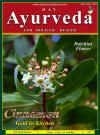 Dec 2024
Dec 2024
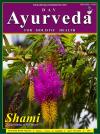 May 2024
May 2024
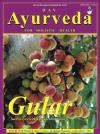 September 2022
September 2022
 April 2022
April 2022
 October 2020
October 2020
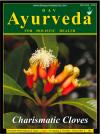 Jan 2020
Jan 2020
 June 2019
June 2019
 January-February 2019
January-February 2019
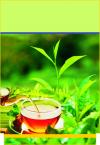 Augest-September
Augest-September
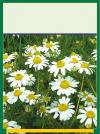 April 2018
April 2018
 November 2017
November 2017
 June 2017
June 2017
 November 2016
November 2016
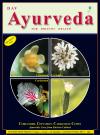 September 2015
September 2015
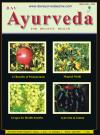 March 2015
March 2015
 July 2014
July 2014
 January 2014
January 2014
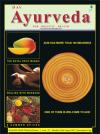 July2013
July2013
 March 2013
March 2013
 May 2012
May 2012
 May 2011
May 2011
 Sep 2010
Sep 2010
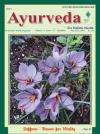 Jun 2010
Jun 2010
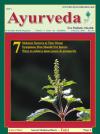 Feb 2010
Feb 2010
 December 2009
December 2009
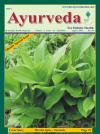 August 2009
August 2009
 June 2009
June 2009
 Feb 2009
Feb 2009
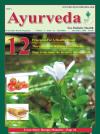 December 2008
December 2008
 October 2008
October 2008
 March 2008
March 2008
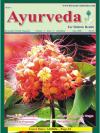 July 2008
July 2008
 May 2008
May 2008